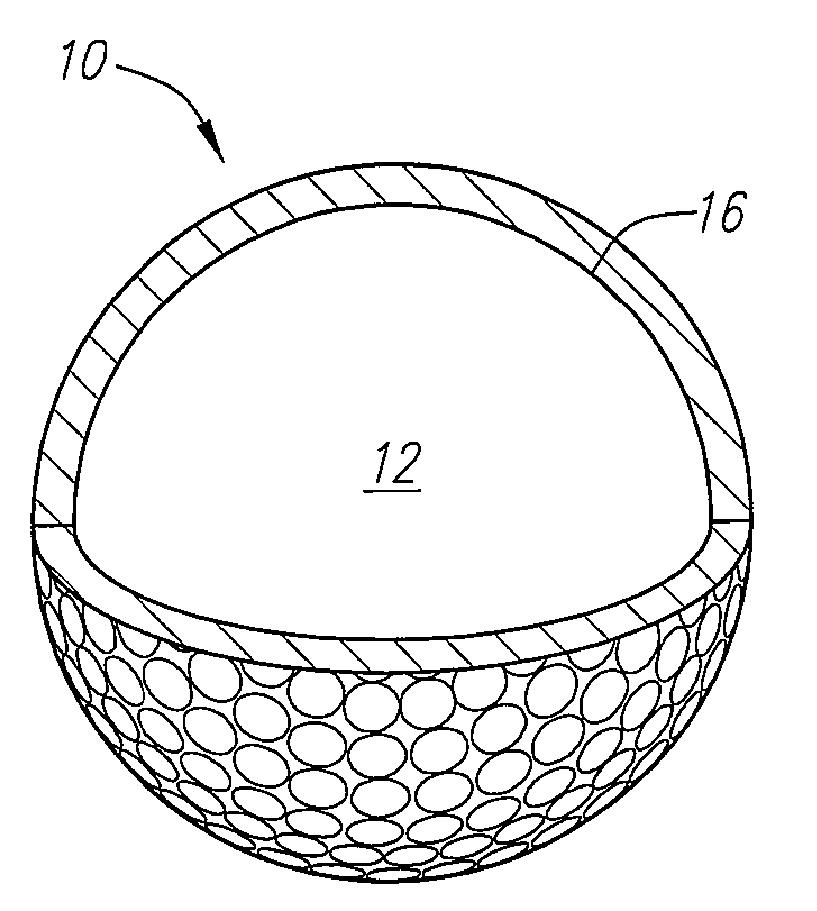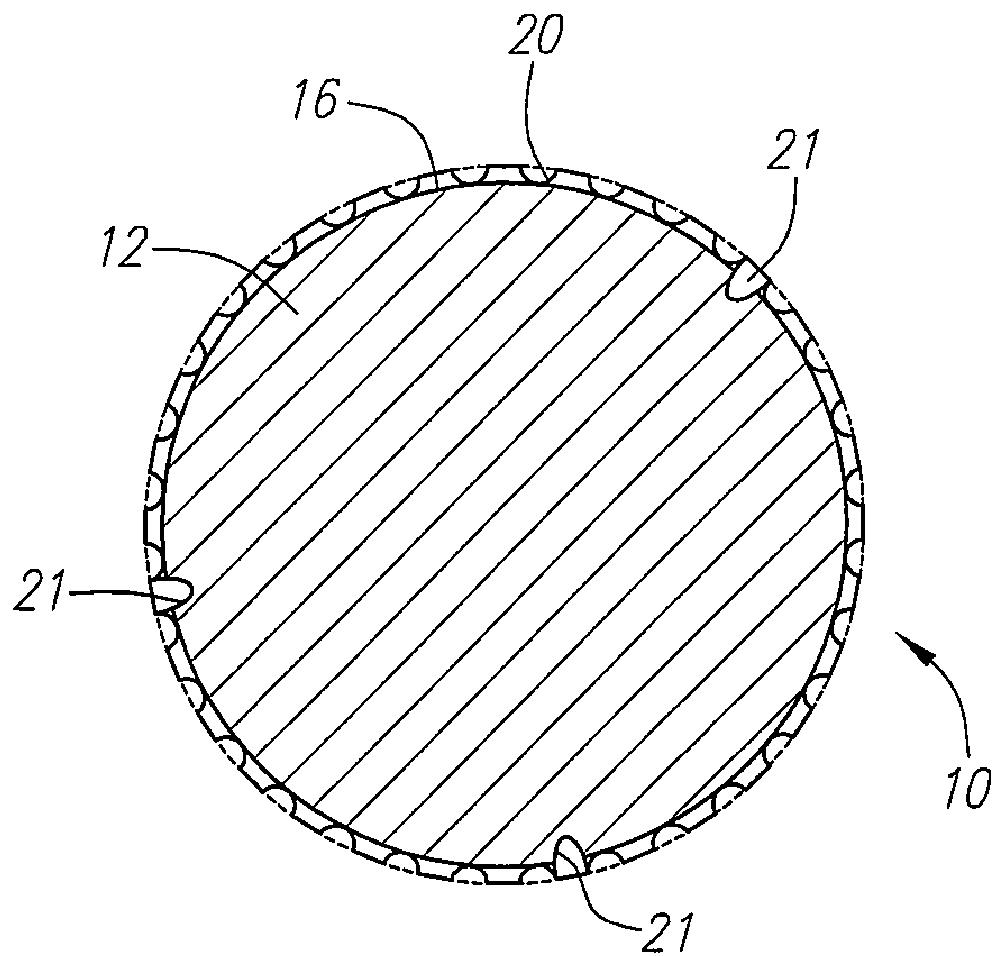Callaway Has Balls with Deep Apertures!
OK, I don’t know if they have them, but they have thought about them! This week Callaway was granted USPN 7494428 titled “Golf Ball,” which describes the invention as:
A two-piece golf ball having a reaction injection molded polyurethane cover is disclosed herein. The golf ball has a core with a diameter preferably ranging from 1.610 inches to 1.670 inches, and a cover having a thickness preferably ranging from 0.015 inch to 0.045 inch. The cover also preferably has a plurality of deep apertures extending through the cover.
Check out this drawing showing the deep apertures extending through the cover and into the core.
The patent contains an interesting explanation of the golf ball manufacturing process:
Conventionally golf balls are made by molding a cover around a core. The core may be wound or solid. The cover is typically injection molded, compression molded, or cast over the core. Injection molding typically requires a mold having at least one pair of mold cavities, e.g., a first mold cavity and a second mold cavity, which mate to form a spherical recess. In addition, a mold may include more than one mold cavity pair.
In one exemplary injection molding process each mold cavity may also include retractable positioning pins to hold the core in the spherical center of the mold cavity pair. Once the core is positioned in the first mold cavity, the respective second mold cavity is mated to the first to close the mold. A cover material is then injected into the closed mold. The positioning pins are retracted while the cover material is flowable to allow the material to fill in any holes caused by the pins. When the material is at least partially cured, the covered core is removed from the mold.
As with injection molding, compression molds typically include multiple pairs of mold cavities, each pair comprising first and second mold cavities that mate to form a spherical recess. In one exemplary compression molding process, a cover material is preformed into half-shells, which are placed into a respective pair of compression mold cavities. The core is placed between the cover material half-shells and the mold is closed. The core and cover combination is then exposed to heat and pressure, which cause the cover half-shells to combine and form a fall cover.
As with the above-referenced processes, a casting process also utilizes pairs of mold cavities. In a casting process, a cover material is introduced into a first mold cavity of each pair. Then, a core is held in position (e.g. by an overhanging vacuum or suction apparatus) to contact the cover material in what will be the spherical center of the mold cavity pair. Once the cover material is at least partially cured (e.g., a point where the core will not substantially move), the core is released, the cover material is introduced into a second mold cavity of each pair, and the mold is closed. The closed mold is then subjected to heat and pressure to cure the cover material thereby forming a cover on the core. With injection molding, compression molding, and casting, the molding cavities typically include a negative dimple pattern to impart a dimple pattern on the cover during the molding process.
Materials previously used as golf ball covers include balata (natural or synthetic), gutta-percha, ionomeric resins (e.g., DuPont’s SURLYN® , and polyurethanes. Balata is the benchmark cover material with respect to sound (i.e. the sound made when the ball is hit by a golf club) and feel (i.e. the sensation imparted to the golfer when hitting the ball). Natural balata is derived from the Bully Gum tree, while synthetic balata is derived from a petroleum compound. Balata is expensive compared to other cover materials, and golf balls covered with balata tend to have poor durability (i.e. poor cut and shear resistance). Gutta percha is derived from the Malaysian sapodilla tree. A golf ball covered with gutta percha is considered to have a harsh sound and feel as compared to balata covered golf balls.
Ionomeric resins, as compared to balata, are typically less expensive and tend to have good durability. However, golf balls having ionomeric resin covers typically have inferior sound and feel, especially as compared to balata covers.
A golf ball with a polyurethane cover generally has greater durability than a golf ball with a balata cover. The polyurethane covered golf ball generally has a better sound and feel than a golf ball with an ionomeric resin cover. Polyurethanes may be thermoset or thermoplastic. Several patents describe the use of polyurethanes in golf balls.
Interesting stuff, but unfortunately the patent doesn’t explain the benefit associated with deep apertures extending through the cover and into the core. Bummer.
Dave Dawsey – Tracking Golf Ball Patents
PS – click here for other golf ball posts


